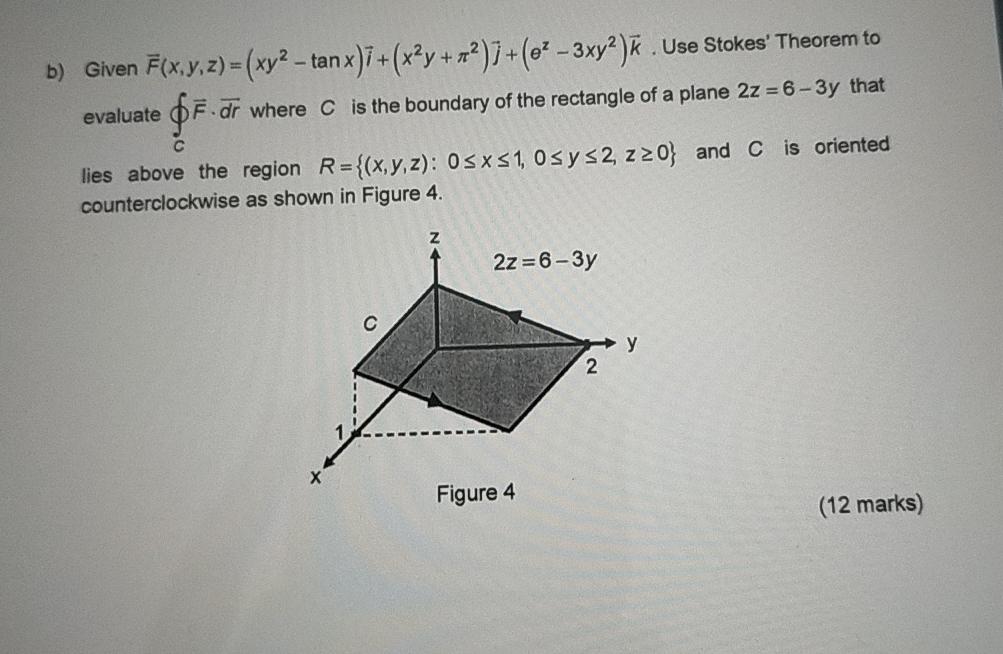Answered step by step
Verified Expert Solution
Question
1 Approved Answer
b) Given vec(F)(x,y,z)=(xy^(2)-tanx)vec(i)+(x^(2)y+pi ^(2))vec(j)+(e^(z)-3xy^(2))vec(k) . Use Stokes' Theorem to evaluate oint_C vec(F)(*)/(b)ar (dr) where C is the boundary of the rectangle of a plane 2z=6-3y
b) Given
vec(F)(x,y,z)=(xy^(2)-tanx)vec(i)+(x^(2)y+\\\\pi ^(2))vec(j)+(e^(z)-3xy^(2))vec(k). Use Stokes' Theorem to evaluate
o\\\\int_C vec(F)(*)/(b)ar (dr)where
Cis the boundary of the rectangle of a plane
2z=6-3ythat lies above the region
R={(x,y,z):0=0}and
Cis oriented counterclockwise as shown in Figure 4.\ (12 marks)

Step by Step Solution
There are 3 Steps involved in it
Step: 1

Get Instant Access to Expert-Tailored Solutions
See step-by-step solutions with expert insights and AI powered tools for academic success
Step: 2

Step: 3

Ace Your Homework with AI
Get the answers you need in no time with our AI-driven, step-by-step assistance
Get Started


